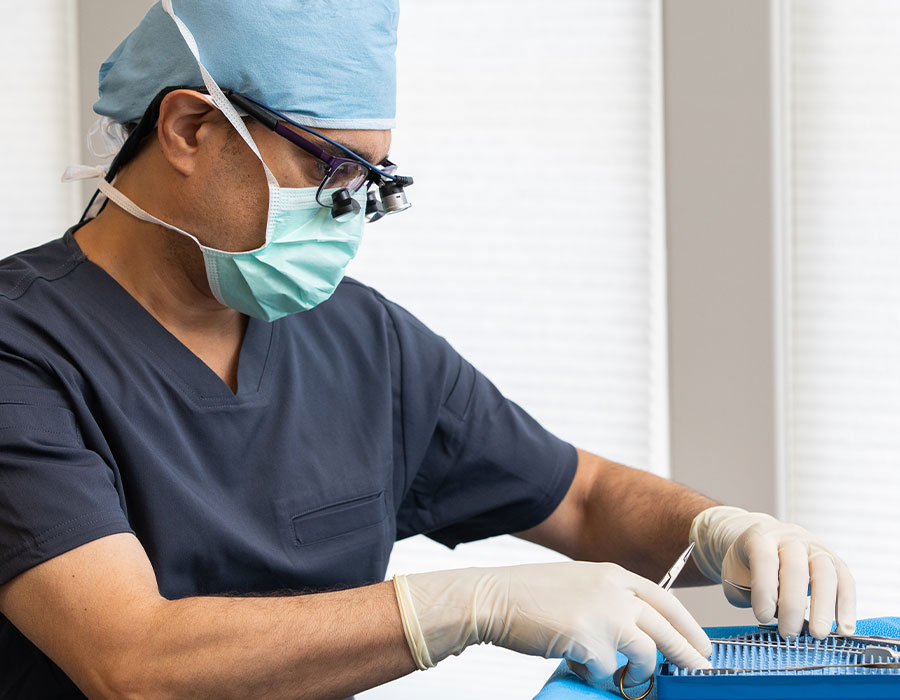Forehead Reduction
Surgical procedure to reduce forehead height, often involving hairline advancement for facial proportion.

Surgical procedure to reduce forehead height, often involving hairline advancement for facial proportion.


Having a disproportionately large forehead can be the cause of low self-esteem and self-consciousness. Many patients do not feel confident to brush their hair back and are limited by how they can style their hair; for many, wearing their hair in “bangs” is their ONLY option. There are many reasons for large foreheads, the most likely being genetics, but if you have spent most of your life hiding behind a heavy fringe afraid to experiment with current hair trends, you might be a candidate for forehead reduction.

Forehead reduction or “hairline lowering” is a permanent cosmetic procedure that shortens the distance between the eyebrows and the top of the forehead where your hairline starts, resulting in a more balanced facial structure. When performed by a reputable surgeon, your results will look completely natural, with minimal visible scar.
A good candidate for forehead reduction is someone with a high or disproportionately large forehead, good scalp elasticity, no hair loss, good hair density, and who is comfortable permanently altering their appearance.
You could also be a candidate if you have recently had a hair graft or a brow lift and wish to bring your hairline forward.

Those with a family history of pattern baldness or receding hairline are not usually prime candidates for forehead reduction surgery. This is because the incision is made in a way that it will be masked by hair growth. If you are already experiencing hair loss, or believe you may suffer hair loss in the future, the scar from surgery will likely become visible over time. Therefore, this procedure is not recommended.
Forehead reduction is done by bringing down the hairline, and shortening the distance between the eyebrows and the top of the forehead.
During the procedure, an incision is made on the forehead where the new hairline will land, and a second incision is made at the old hairline. The skin between the two incisions is then separated from connective tissue and removed and the hairline is pulled down to meet the forehead incision, thus closing the gap and shortening the forehead. The procedure is carefully executed so as to preserve all hair follicles and nerves and the incision is hidden in the hairline so scarring will be virtually imperceptible. New hair will grow through the scar, making it even more hidden.
Forehead reduction is usually done as an outpatient surgery, under both general and local anesthetic and patients can return home the same day.
Forehead reduction surgery usually takes anywhere between 1.5 – 3 hours but it ultimately depends on the desired result and extent of surgery required. Most patients achieve their desired results in only one procedure and some patients may combine hairline lowering with other procedures such as a brow lift.
The incision will be closed with sutures and covered with a light compression pad. Some swelling and bruising can be expected at the incision site, but this should subside in the days following the procedure and there is typically minimal or no swelling or bruising around the eyes. You will return to Dr Amadi’s office for a one-week post-op check-up at which time you will have your sutures removed.
Most people can return to their normal routine the following day–though it is recommended to avoid any strenuous activities for at least a week–and to social engagements in under a week. You can style your hair in a way that will hide your sutures, or they may be hidden under a headband, scarf, or hat.
In some cases, a mild pain killer may be prescribed and you should sleep with your head elevated for a few days after surgery to help minimize swelling and bruising. You must also continue to keep your incision clean and monitor for infection.
You can continue to hide your incision during the healing phase by styling your hair in a way that masks the scar. It will take about six months for your incision to heal completely but, unlike other procedures, your results will be visible immediately.
Forehead reduction surgery comes with very few risks and is usually very easy to recover from. The most common risk associated with the procedure is numbness behind the incision site. This numbness is not usually permanent and you should regain feeling in a few weeks as the nerves in the area heal. Other potential risks/complications include asymmetry, visible scarring, or hair loss. Hair loss is usually temporary, often called “shock” hair loss. Those follicles usually recover within 6 months to a year. Permanent hair loss, though rare, is possible, but can be treated with hair transplantation.
As long as your procedure is performed by a capable, board-certified surgeon, such as Dr. Amadi, the risk of complications is quite low.
Book a consultation with Dr. Amadi to discuss your options and what he can do to help you achieve your most optimum results.

Team
Focusing on a natural and age-appropriate look, Dr. Amadi will deliver the finest personalized care, giving you the results you desire.
Meet Dr. Amadi